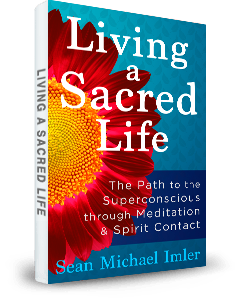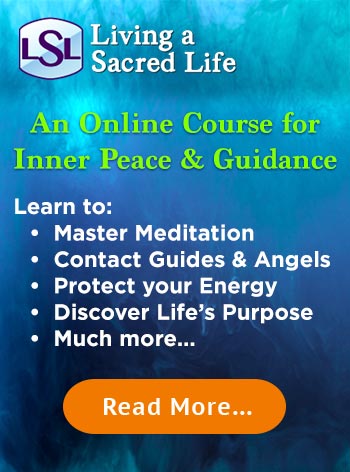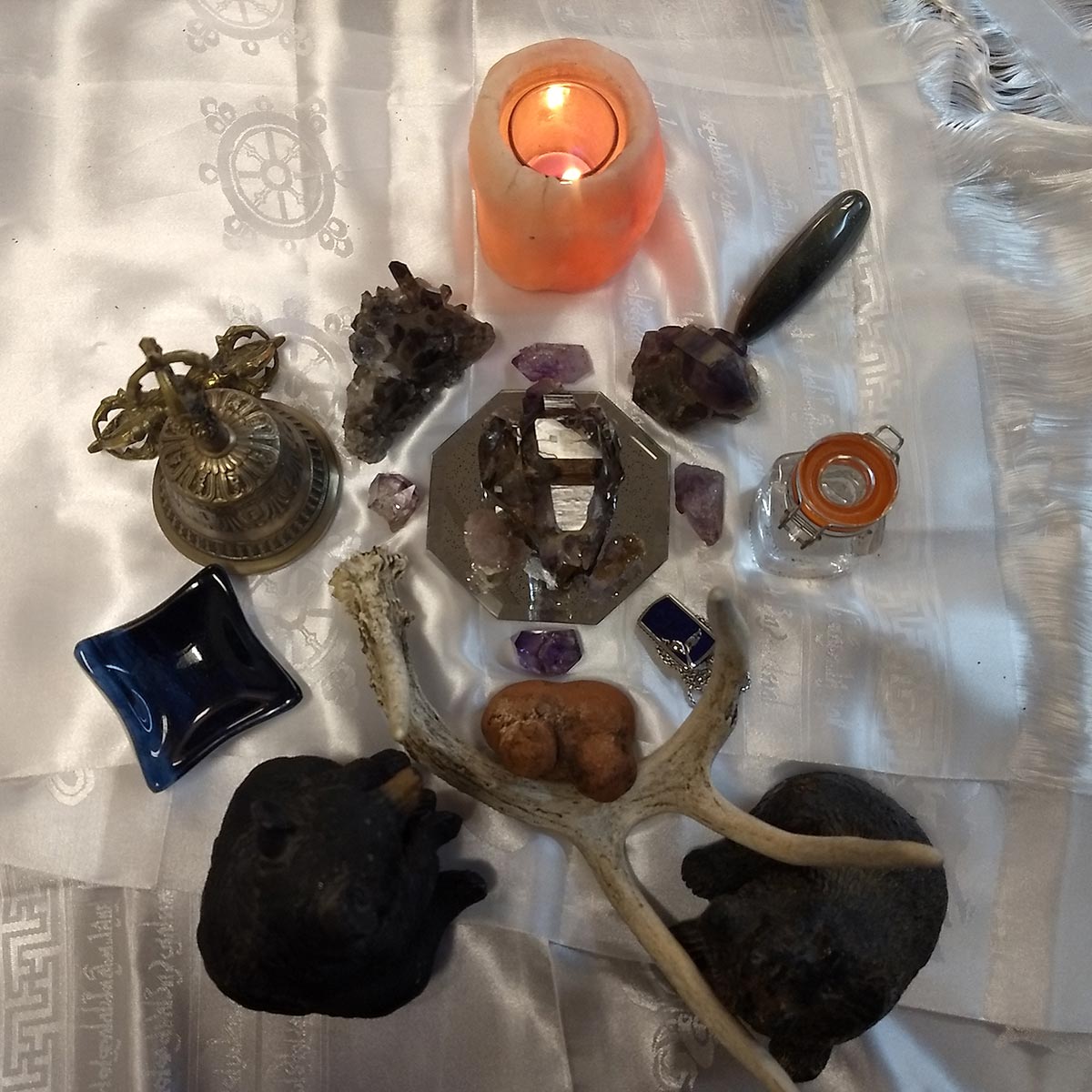Shamanism, a spiritual practice that has been around for centuries, holds a profound potential for awakening the human mind to the realities of the spiritual world. Shamans, as the practitioners are called, utilize a variety of methods to access these hidden realms, offering insights into the very fabric of existence. These methods range from the use of psychoactive substances, or entheogens, to meditative and contemplative practices that don’t involve any substances at all.
Contents
This article aims to delve into these varied aspects of shamanism, offering a comprehensive exploration of both entheogenic methods and non-entheogenic alternatives for those seeking spiritual experiences.
Exploring Shamanism: An Introduction to Entheogens and Non-Psychadelic Alternatives for Spiritual Awakening
In my extensive exploration of shamanism, I’ve encountered a fascinating world of psychoactive substances, often referred to as ‘entheogens,’ ‘psychadelics,’ or ‘hallucinogens,’ which serve as spiritual tools helping to facilitate profound experiences of self-discovery and enlightenment. The term, ‘entheogen,’ derived from Greek, means “generating the divine within,” which is a fitting description for these mystical substances. Despite the potential these substances hold for spiritual awakening, it’s essential to note that they are not the only path to profound spiritual experiences. There exist alternatives that are equally potent in catalyzing transformation and growth.
The most prevalent entheogens used in shamanic practices include LSD, Ayahuasca, Psilocybin Mushrooms, Peyote, Kambo, and San Pedro cacti. These substances, when used in a ritualistic setting, are believed to induce a state of heightened awareness, allowing the user to tap into deeper aspects of their consciousness (and often, the collective consciousness) beyond the limitations of the egoic mind. However, these substances demand respect and careful guidance, both for safety and to facilitate the most beneficial experiences.
Entheogens are like keys to hidden doors within the human psyche, doors that lead to profound insights and healing. Yet, not everyone is comfortable with using these keys, which is perfectly okay. For there are other doors, other paths, that lead to the same destination.
Alternatives to Entheogens
I’ve found that practices such as journeying, meditation, breathwork, yoga, hypnosis, and even certain forms of dance can provide similarly profound experiences to those elicited by entheogens. Each of these practices has a deep-rooted spiritual tradition and can serve as an effective tool for self-discovery and spiritual growth. They enable individuals to reach altered states of consciousness without the use of substances, providing an alternative path for those who prefer to avoid psychoactive substances.
- Shamanic Journeying: With the use of repetitive sound and a relationship with spirit guides, one can achieve their spiritual goals. This requires practice and some facilitation.
- Hypnosis: Though this can be done alone with Self-Hypnosis, working with an experienced facilitator can have profound results.
- Meditation: Through disciplined practice, meditation can lead to transcendental states of consciousness, revealing insights into the nature of self and reality.
- Yoga: The physical postures and breath control techniques of yoga can generate heightened states of awareness and a deep sense of interconnectedness.
- Breathwork: By consciously manipulating the breath, individuals can access non-ordinary states of consciousness, facilitating self-discovery and healing.
- Dance: Certain forms of dance, like ecstatic dance, tap into primal energies, allowing for catharsis and deep emotional release.
While entheogens have played a significant role in shamanic practices, they are not the sole means to spiritual awakening. Alternatives exist, encompassing a broad spectrum of practices that can facilitate profound shifts in consciousness. Each path has its unique characteristics and benefits. The key is to find the one that resonates with you, honoring your personal journey towards awakening.
Understanding the Role of Psychoactive Substances in Shamanism
In the realm of shamanic practices, the role of psychoactive substances—often referred to as entheogens—takes on a unique and profound significance. Entheogens, derived from the Greek words ‘entheos’ (god within) and ‘genesthai’ (to generate), are substances used to induce spiritual experiences, often facilitating a deeper connection with the divine or spiritual realms.
In a survey, 55% of participants reported using psychoactive substances during shamanic practices.
Traditionally, shamans have used an array of psychoactive substances—from the Ayahuasca vine in South America, to the psychedelic mushrooms of Central America and the peyote cactus in North America. The purpose of these substances is not to simply alter consciousness, but to provide an avenue for the shaman or the participant to access spiritual dimensions, obtain wisdom, experience healing, and engage in problem-solving at a spiritual level.
The Nature of Entheogens in Shamanic Practice
Entheogens, in the context of shamanism, are not viewed as recreational drugs or means for escapism. Instead, they are sacred tools, designed to facilitate a profound shift in consciousness (often referred to as altered states of consciousness or ASC). In these states, individuals might experience a dissolution of the ego (the ‘I’ consciousness), a feeling of unity with the universe, or perhaps even direct encounters with spiritual entities.
It’s important to note, however, that these experiences are not orchestrated by the substances themselves. Rather, the substances serve as catalysts, unlocking doorways to realms typically beyond our perceptual reach. The shamans, with their extensive knowledge and training, guide this process, maintaining the safety and well-being of the participants while helping them interpret their experiences.
Respect and Caution
While the use of entheogens in shamanic practices can offer profound insights and healing, it is crucial to approach them with a deep sense of respect and caution. These are powerful substances that can have both positive and negative effects, depending on the set (mindset of the user), setting (the environment in which the substance is consumed), and dosage. Furthermore, not all individuals are suitable candidates for entheogen use, particularly those with certain mental health conditions or those on specific medications.
Entheogens play a pivotal role in shamanic practices, acting as tools for healing, insight, and spiritual exploration. However, their use should always be approached with respect, caution, and under the guidance of an experienced shaman or facilitator.
The Pros and Cons of Using Entheogens for Spiritual Transformation
In the broad and intricate landscape of spiritual transformation, the use of entheogens (psychoactive substances utilized in religious or spiritual contexts) often spark vigorous debates. As someone who deeply values the sacredness of these experiences, I believe it is crucial to provide balanced, unbiased information about the pros and cons of using these substances for spiritual growth.
On one hand, entheogens such as Ayahuasca, psilocybin mushrooms, and LSD have been known to catalyze profound spiritual revelations. These substances are able to dismantle the ego, allowing for an unfiltered connection between the individual and the cosmos (what some might call the divine or the universal consciousness). This connection can lead to a heightened sense of oneness, increased empathy, and a broader perspective on life—valuable outcomes that can deeply enrich one’s spiritual path.
Once you’ve done an entheogen, you’ll get a different perspective on reality. The ego or survival mechanism gets temporarily turned off during the experience, and when it turns on again, it takes on a significantly different flavor. It’s as if there’s no longer a need to do battle with reality, but rather a profound feeling of interconnectedness with all life. This new awareness dissipates a little but never entirely goes away. Timothy Leary, the famed LSD evangelist believed that the entire world should “turn on, tune in, and drop out.”
Entheogens can lead to profound spiritual revelations, allowing for an unfiltered connection between the individual and the cosmos.
Risks and Drawbacks
However, like any powerful tool, entheogens also come with their share of risks and drawbacks. The experience of taking these substances is often unpredictable and can lead to uncomfortable or even terrifying experiences (commonly referred to as “bad trips”). You may even use the same substance at differing amounts and have completely different experiences. Environmental factors play a part as well as current circumstances in one’s life.
Many substances induce vomiting, what is often referred to as ‘getting well’. This can lead to catharsis, but during the process, it is most uncomfortable, possibly beyond someone’s personal comfort zone. The getting well process purges the body of stuck energy and can heal mental and emotional sickness, but this is not guaranteed.
Long-term misuse of these substances can result in psychological disorders like psychosis or depersonalization. I’ve also seen it distort thinking processes and create nervous ticks in others. It can also lead to a personal clarity that can be seen by others as emotional distancing. The same can occur with extensive meditation and is not necessarily a bad thing. It depends on whether this is appropriate for your lifestyle.
Furthermore, not everyone is in a mental or physical state where taking these substances would be safe or beneficial. Those with a history of mental illness, for example, should exercise extreme caution and only pursue this with an experienced practitioner who is available after the episode, not just during. It may be better to consider an alternative which is gentler.
Potential Advantages of Using Entheogens
- Deep spiritual revelations: Many users report profound insights and spiritual experiences that can significantly contribute to personal growth and understanding.
- Increased empathy and connectedness: Entheogens can help individuals feel more connected to others and the world around them, fostering a sense of unity and compassion.
- Therapeutic potential: Research suggests that some entheogens, under the right circumstances, may have therapeutic benefits for individuals suffering from conditions like depression, anxiety, and PTSD.
- Profound connectness: A true awakening of your connection to all life and the importance to uphold it.
Potential Drawbacks of Using Entheogens
- Unpredictable experiences: The impact of entheogens can be significantly influenced by one’s current mental and physical state, making their effects unpredictable.
- Physical discomfort: It’s difficult to escape the vomiting that ensues from early use. After more prolonged use, this generally disappates and goes away.
- Risk of negative psychological effects: Misuse or overuse of entheogens can lead to various psychological issues, such as psychosis or depersonalization.
- Potential legal issues: In many jurisdictions, the use and possession of many entheogens are illegal, leading to potential legal consequences.
While entheogens can serve as powerful tools for spiritual transformation, they should be approached with respect, caution, and a commitment to personal responsibility. It’s also essential to remember that these substances are not the only path to spiritual growth and enlightenment. For those who prefer not to use entheogens, there are a multitude of alternative methods available, which can also lead to profound spiritual experiences.
Ayahuasca: The Amazonian Brew and its Spiritual Benefits
In my years of exploration and introspection, I’ve come to understand the profound spiritual depths that Ayahuasca, a powerful brew from the Amazonian regions, can reach. This entheogen, a substance intended to bring about a spiritual experience, is brewed from two specific plants: Banisteriopsis caapi and Psychotria viridis. The former contributes the harmala alkaloids necessary for the latter’s DMT to become orally active, resulting in a potent concoction known for its transformative potential.
The spiritual benefits of Ayahuasca are manifold and deeply personal. In essence, what you receive from the experience is often reflective of what you bring into it (a concept often discussed in shamanic circles). However, for the sake of understanding, I will delineate some common threads observed across many Ayahuasca experiences.
- Heightened Self-Awareness: It’s not uncommon to experience a sense of enhanced self-perception, where you can confront aspects of your character, behavior, and life choices with a newfound clarity.
- Emotional Catharsis: Ayahuasca often facilitates profound emotional release, allowing the participant to address, process, and heal from past traumas or emotional blockages.
- Existential Insights: Many participants report a deeper understanding of life, death, and their place within the universe. This often leads to a reshaping of belief systems and personal philosophy.
- Connection with Nature: The experience often cultivates a profound appreciation for the interconnectedness of all life, fostering a sense of stewardship for our planet and its inhabitants.
Not a Panacea
Yet, despite these profound benefits, I emphasize that Ayahuasca is not a panacea, nor is it a path everyone should tread. The brew’s intense effects can be overwhelming, even traumatic, without the appropriate guidance and preparation. A trusted and experienced shaman, as well as a supportive and safe environment, are crucial to navigate the challenges and reap the rewards of an Ayahuasca journey.
Ayahuasca isn’t a pathway to enlightenment for the masses, but a tool for introspection, healing, and spiritual exploration that demands respect and responsible use.
Lastly, it’s paramount to remember that the same spiritual heights can often be achieved without entheogens. Practices such as shamanic journeying, deep meditation, breathwork, yoga, and even certain forms of expressive art can unlock similar states of consciousness and self-understanding. It’s all about finding a path that aligns with your individual needs, beliefs, and circumstances.
Psilocybin Mushrooms: The Magic Fungi for Consciousness Expansion
In the realm of entheogens that lead to heightened states of consciousness, Psilocybin mushrooms (often referred to as “Magic Mushrooms”) dominate the folklore of many cultures. A powerful psychedelic compound, psilocybin, is found in over 200 species of mushrooms, revealing its wide-spread adoption and use in spiritual practices.
The psilocybin journey is not a casual affair. It requires preparation and intentionality, which (in a traditional shamanic context) often involves days or even weeks of fasting, preparation, and ceremonial rituals. The experience itself, which I’ve been privy to on a number of occasions, is a profound and deeply transformative journey through one’s inner landscape. It’s like peeling back the layers of the self to reveal, confront, and integrate the raw, unfiltered essence underneath.
Users often report experiences of ego dissolution (a loss of the sense of self), intense emotional insight, and a feeling of interconnectedness with nature and the universe. The potency of these experiences often leads to significant personal growth and lasting positive changes in one’s life.
Yet, as powerful as they are, psilocybin mushrooms aren’t for everyone. The experience can be intense and challenging, and not everyone is ready or able to navigate the inner terrain that psilocybin reveals. There’s also the legal aspect to consider; in many parts of the world, psilocybin mushrooms are illegal, and their use can lead to severe legal repercussions.
If you’re interested in delving deeper into psylocybin, it would be a good idea to read Terence McKenna, who many considered to be the expert on the mushroom and associated psychadelic experience. Whatever path you choose, be sure to titrate your experiences and not do high dosages without previous experience and facilitation.
Mescaline: The Visionary Cactus for Spiritual Healing and Insight
As we delve deeper into the world of shamanic practices, we can’t overlook the significant role that Mescaline, a naturally occurring psychedelic alkaloid, plays in spiritual healing and insights. Derived primarily from the Peyote cactus (Lophophora williamsii), the San Pedro cactus (Echinopsis pachanoi), and a few other members of the cactus family, Mescaline has been used for centuries by indigenous tribes of North and Central America for its powerful visionary effects.
When ingested, Mescaline (3,4,5-trimethoxyphenethylamine) is known to induce a deep introspective state. This altered state of consciousness, often characterized by vivid visualizations and a profound sense of interconnectedness with the universe, has been leveraged for spiritual and therapeutic purposes (as in the case of treatments for alcoholism and depression). It’s important to understand, however, that while many report profound revelations and personal insights, these experiences can also be challenging and require proper guidance and preparation.
Mescaline acts as a doorway to the subconscious, providing access to deeply ingrained patterns of thought and behavior that can be difficult to reach in ordinary states of consciousness. It allows for a deep dive into the psyche, bringing forth feelings and memories that might have been repressed.
The Huichol Indians and their Usage of Peyote
Communities residing in the Sierra Madre Mountains of Mexico, the Huichol Indians, are one such group that has been utilizing the psychoactive properties of peyote for centuries. Their use of this powerful entheogen is not merely recreational; rather, they view it as a crucial component in their spiritual practice.
- Peyote as a Sacred Entity: The Huichols regard peyote as a sacred entity, referring to it as “Hikuri,” which translates to “the one that enlightens.” For them, consuming peyote is akin to communing directly with the divine.
- Role in Rituals: Peyote features prominently in their religious rituals, including healing ceremonies and rites of passage. The effects of the plant are believed to provide direct spiritual insight and guidance.
The Native American Church and their Usage of Peyote
Similarly, the Native American Church, an indigenous organization found mainly in North America, considers peyote as a vital part of their religious and spiritual practices.
- Peyote Meetings: The Church conducts what they refer to as “Peyote Meetings,” where the plant is consumed in a highly ritualized setting. These meetings serve as a means for spiritual exploration and personal growth.
- Symbol of Resilience: For many Native American communities, peyote became a symbol of resilience in the face of cultural erasure during colonization. By maintaining the tradition of peyote usage, they were able to preserve a key element of their spiritual heritage.
In these contexts, mescaline, the active compound in peyote, is not a substance to abuse. Instead, it is a powerful tool for spiritual exploration and self-discovery, a means to connect with a higher power and to delve into the subconscious mind.
While Mescaline offers a potent pathway to spiritual insight, it’s not the only path available. The goal is not the substance or the practice itself, but the state of expanded awareness and self-understanding that it facilitates. Remember, each person’s journey is unique, and what works for one may not work for another. As always, seek guidance and make informed decisions about your spiritual practices.
Learning the Power of the Shamanic Journey Without the Use of Entheogens
There’s a common misconception that the shamanic journey is intrinsically linked to the use of entheogens. While it’s true that many shamanic traditions around the world utilize psychoactive substances to facilitate altered states of consciousness, this is not a universal requirement. In fact, it’s entirely possible, and often even beneficial, to learn and practice shamanic journeying without the use of entheogens.
One of the primary methods employed to induce a shamanic journey without the use of entheogens is through the use of rhythmic drumming. The repetitive, entrancing sounds of a drum can help the practitioner enter a trance-like state, which is conducive to journeying. I have personally found this method to be highly effective in achieving the desired state of consciousness without the need for any substances. Rattles can be equally effective to entrain the brain to enter into a deeper trance-like state.
Not One Size Fits All
It’s also worth noting that different individuals may find different methods more effective for them. When choosing a technique, it’s crucial to consider personal comfort and preference. The most important thing is to find a method that allows the individual to relax and focus their mind, preparing them for the journey ahead.
While entheogens can indeed play a role in shamanic practices, they are by no means essential. The essence of shamanism lies in the ability to connect with the spiritual world and gain insights and wisdom from that realm. This connection, when achieved without the use of substances, can lead to a more profound and sustainable spiritual practice.
In conclusion, entheogens are not a prerequisite for a successful shamanic journey. Through various techniques such as rhythmic drumming, meditation, controlled breathing, and dancing, an individual can potentially achieve the same, if not greater, levels of consciousness and spiritual connection.
Non-Drug Alternatives to Shamanic Practices: Breathwork, Meditation, and Yoga
In my experience and observation, there is a richness in non-drug alternatives to shamanic practices that ought not to be underestimated. Often overlooked, techniques such as Shamanic journeying, breathwork, meditation, music and dance, and yoga can provide pathways to spiritual experiences and altered states of consciousness that are as profound and transformative as those induced by psychoactive substances.
Breathwork
Breathwork, for instance, is a powerful tool for accessing non-ordinary states of consciousness. The transformative potential of breath is something we typically take for granted, yet when harnessed with intention, it can facilitate deep inner journeys. Holotropic Breathwork, developed by psychiatrist Stanislav Grof, involves rapid, deep breathing to induce altered states of consciousness, often resulting in profound insights and emotional purges (a therapeutic release of repressed emotions).
“Breath is the bridge which connects life to consciousness, which unites your body to your thoughts.”
~Thich Nhat Hanh
Meditation
Meditation, a cornerstone of numerous spiritual traditions, offers another non-drug alternative. Its proponents have long claimed the ability to achieve altered states of consciousness through disciplined mental practice. While the experience of meditation can vary widely depending on the practice (from focusing on a single thought or mantra to open-monitoring meditation where one is receptive to all thoughts and sensations), the end goal is often similar: the attainment of a state of inner peace and heightened awareness.
To learn more about Meditation, read “How to Meditate – 3 Things You Must Know“.
Yoga
Yoga, both in its physical postures (asanas) and its philosophical teachings, is another pathway to spiritual experiences. By connecting body, mind, and spirit, yogic practices aim to unify the self with the divine. Through asanas, pranayama (breathing techniques), and dhyana (meditation), practitioners can reach states of consciousness not unlike those reported in shamanic journeys.
It’s important to note that while these practices are non-drug alternatives, they are not shortcuts or easy routes to spiritual enlightenment. They require discipline, dedication, and often, guidance from experienced practitioners. Yet, they offer a different perspective, one that sees the potential for spiritual growth and transformation not in external substances, but within our own bodies and minds.
Ultimately, the choice between entheogens and non-drug alternatives for spiritual exploration is a personal one, often influenced by individual beliefs, circumstances, and comfort levels. It’s essential, however, to remember that neither path guarantees a spiritual experience; both are simply tools that can assist us on our journey towards greater understanding and consciousness.
The Power of Sound Healing: How Music and Frequencies Can Alter Consciousness
In the realm of consciousness exploration, we (as seekers, healers, and spiritual enthusiasts) often turn to entheogens—psychoactive substances that induce alterations in perception, mood, and numerous other cognitive processes. However, it is essential to remember that entheogens are not the only portals to expanded states of awareness. One potent, natural, and accessible method of catalyzing profound inner experiences is through the power of sound healing.
Sound, a fundamental aspect of our universe, carries in its waves the potential to transform consciousness in extraordinary ways. It has been utilized since ancient times as a potent tool for healing and spiritual development. Modern science is now catching up, offering empirical backing to these age-old spiritual practices. I believe that understanding and harnessing this power can provide a rich and fulfilling alternative to entheogenic substances, and here’s why:
The Science of Sound Healing
Firstly, let’s delve into the science behind sound healing. Sound waves are essentially vibrations, and as such, they have a direct impact on the matter they interact with. In the context of our bodies, these vibrations can affect our cells, tissues, and neurological processes, leading to shifts in both physical and mental states.
Research has shown that certain frequencies and rhythmic patterns (like those found in traditional shamanic drumming or Tibetan singing bowls) can induce a trance-like state, facilitating deep meditation and promoting self-healing. The frequencies emmited from instruments and devices affect the nervous system and can faciliate coherence and harmony to the body. Because frequencies can synchronize with and alter our brainwaves, the electrical wave patterns in the brain. Here’s a simple table to illustrate this:
| Brainwave State | Frequency Range | Associated States of Consciousness |
|---|---|---|
| Beta | 13-30 Hz | Normal wakefulness, focused attention |
| Alpha | 8-13 Hz | Relaxed wakefulness, pre-sleep and pre-waking drowsiness |
| Theta | 4-8 Hz | Deep meditation, REM sleep, insight, high creativity |
| Delta | 0.5-4 Hz | Deep dreamless sleep, healing, and regeneration |
Practical Applications of Sound Healing
Sound healing can be incorporated into our lives in a variety of ways. Whether through the use of instruments like gongs, singing bowls, and tuning forks, or through the human voice and music, there are numerous paths to explore. Some of the most popular methods include binaural beats (two tones at slightly different frequencies played in each ear), guided meditations with soundscapes, and sound baths (immersive experiences often led by a sound healer).
If you’d like to experience binaural feedback in music, listen to NeuralAmbience, music that I personally created to help induce a deep trance-like state for meditation and personal healing.
While the substances often used in shamanic practices can provide profound spiritual experiences, they are not suitable or desirable for everyone. Sound healing, in contrast, is accessible to all. It requires no ingestion of substances, has no known adverse effects, and can be tailored to individual needs and preferences.
“Music in the soul can be heard by the universe.”
~Lao Tzu
Ultimately, the pursuit of expanded consciousness is a profoundly personal journey. As we navigate this path, we must remember that there are numerous ways to unlock our potential, and what works for one may not work for another. Whether through the use of entheogens or the power of sound, may all our journeys lead us closer to the source of our being. Through exploration and experimentation, we can find the tools that resonate with our individual souls and guide us towards greater awareness and understanding.
If you’re interested in sound healing, check out Blue Bear Healing – Sound Healing. Also, I lead a free monthly online healing session, Evening of Shamanic Sound Healing.
Nature as a Shamanic Teacher: The Sacred Connection Between Humans and the Environment
There’s a profound wisdom that I believe resonates within each of us, an understanding that everything in the universe is indeed interconnected, and to fully grasp this, we must first understand our relationship with Nature – the great Shamanic teacher. It is through this connection that we can access unique states of consciousness, independent of the use of entheogens (psychoactive substances used for spiritual purposes).
Our ancestors, the earliest practitioners of shamanism, recognized the critical role of the environment in their spiritual work. They acknowledged the spirits of the trees, rivers, and animals, understanding that these entities held wisdom and knowledge. Every aspect of the natural world was considered a guide, a teacher. They found their visions in the rustling leaves, their messages in the behavior of the animals, and their healing in the herbs scattered across the plains.
Just as they did, we can connect with the natural world in a profound and spiritual way. This connection, when deeply explored and nurtured, offers a pathway to greater states of consciousness. But how do we cultivate this sacred relationship? How might we dive deeper into this wellspring of wisdom waiting to be tapped?
Practices for Deepening Your Connection with Nature
First, we must learn to quiet our minds (a task easier said than done in today’s hustle and bustle world). By spending time in nature, whether it’s a local park or a remote wilderness, we can work to silence the internal chatter. When our minds are quiet, we’re more receptive to the subtle messages and teachings of the environment around us. This is the essence of meditation and mindfulness, to be fully present in the moment. And in that presence, we connect.
- Observation: Simply observe your surroundings. Watch the way the leaves move in the wind. Listen to the songs of the birds. Feel the coolness of the soil. By actively observing, we engage all our senses, opening ourselves to the lessons nature has to offer.
- Respect: Respect for nature is paramount. This is not just about avoiding litter or adhering to the “leave no trace” principle. It’s about recognizing the inherent worth of every living thing and understanding that we are just one part of a larger ecosystem.
- Communication: This might seem odd, but try talking to plants or animals. This doesn’t have to be out loud; internal dialogue works just as well. Ask them questions, thank them for their presence. You’d be surprised at how much you can learn in these silent conversations.
As a Regular Routine
By incorporating these practices into our regular routines, we can begin to realign ourselves with the rhythms of nature. This reconnection can, over time, lead to those greater states of consciousness we seek.
As we walk this path, we should remember that this is a journey of discovery, not a destination. The teachings of nature are vast and varied, ever-changing with the seasons. And, like all great teachers, nature requires patience and attention to reveal its secrets. It’s an ongoing process, a lifelong journey, but one I can assure you is worth the journey.
“In every walk with Nature, one receives far more than he seeks.”
~John Muir
So, whether you choose to use entheogens as a pathway to a greater state of consciousness or prefer the teachings of nature, it’s important to understand that these are just tools in the broad spectrum of spiritual experiences. They are not the experience itself. Ultimately, the spiritual journey is deeply personal and unique to every individual. It’s up to each of us to find our own path and walk it with courage, curiosity, and respect for the interconnected web of life that we are all a part of.
Hypnosis and Hypnotherapy
Long before the popularization of psychoactive substances in spiritual and therapeutic explorations, techniques like hypnosis were being employed to access deeper states of consciousness. To some, the experiences under hypnosis can be as profound as those induced by entheogens. Equally, they come without the potential risks often associated with substance use.
Hypnotherapy, a therapeutic technique that employs hypnosis, has been recognized for its effectiveness in addressing a range of issues, from smoking cessation to trauma recovery. It’s not uncommon for patients to share they’ve had profound, psychedelic-like experiences during their sessions, despite the absence of any psychoactive substances.
- Regression therapy: One of the most potent techniques in hypnotherapy, regression therapy allows individuals to revisit past experiences, often with a new perspective. This can be a deeply transformative process, similar to the reflective states that some individuals reach under the influence of entheogens. Read: “Past Life Regression and How Does It Work?“
- Guided imagery: Through guided imagery, one can embark on vivid, dream-like journeys that can be as complex and symbolic as the visions experienced on a psychedelic trip. The difference is, the imagery in hypnosis is guided by the therapist and the subconscious of the client, rather than a substance. Read: “Heal Your Mind with Hypnosis and Hypnotherapy“
- Body scan: A technique often used in mindfulness and hypnosis, a body scan can lead to a heightened awareness of one’s physical presence, which can be likened to the heightened senses some experience under the influence of psychedelics.
Although hypnotherapy doesn’t involve any substances, the experiences it can evoke can be intense and transformative. It is essential, however, to remember that as with any form of therapy, individual experiences can greatly vary.
While hypnosis can indeed lead to deep self-exploration and transformative experiences, it is not a magic solution or a quick fix. It requires a skilled therapist and the individual’s willingness to engage with the process.
The importance of Integration: How to Use Shamanic Experiences for Personal Transformation and Healing
It is essential for us to understand that shamanic experiences, when properly integrated into our lives, hold the potential for profound personal transformation and healing (as I have personally witnessed countless times). These experiences are not merely about momentarily stepping into a different dimension or reality, rather they serve to reveal deep psychological, emotional, and spiritual insights that can catalyze significant shifts in our consciousness and our understanding of ourselves and our place in the universe.
When an individual undergoes a shamanic journey, they invariably encounter archetypal symbols, entities, and narratives that reflect aspects of their psyche and their life’s story. These experiences can trigger deep emotional release, facilitate the healing of past traumas, and provide guidance for personal growth and transformation. However, these insights and revelations are of little value if they are not properly integrated into one’s daily life (which I have seen to be a common pitfall among novices in the shamanic path).
The Importance of Integration
The importance of integration cannot be overstated. It is the bridge that connects the powerful revelations of the shamanic experience with the practical realities of daily life. Without it, the transformative potential of these experiences remains untapped.
To effectively integrate the insights and lessons gleaned from a shamanic journey, one must be willing to engage in the hard work of self-reflection, introspection, and personal transformation. This often involves confronting and resolving one’s shadows and traumas, cultivating self-awareness, and implementing necessary changes in one’s behavior and lifestyle. This process can be facilitated through various means:
- Journaling: Writing about your experiences can be a powerful tool in the integration process. It allows you to revisit your journey, gain clarity on the insights and messages received, and formulate a plan for implementing these insights into your daily life.
- Meditation and mindfulness practices: These practices can help anchor the insights and transformations gained during the journey in your day-to-day consciousness. They promote self-awareness, emotional regulation and, inner peace, which are essential for personal transformation.
- Coaching: A skilled coach can offer invaluable assistance in integrating and making sense of your shamanic experiences. They can provide a safe space for you to explore and process your experiences, and can offer guidance on how to apply the insights in a practical and healthy manner.
- Community support: Sharing your experiences and insights with a supportive community can be a cathartic and empowering part of the integration process. The shared understanding and common language within such communities can provide much-needed validation and encouragement.
By engaging in this rigorous process of integration, one can harness the transformative power of shamanic experiences for personal growth and healing. It is through this process that the seeds of transformation planted during the journey can take root and bear fruit in our daily lives.
If you’re interested in having a facilitated shamanic healing experience, contact Sean Imler for a consultation.
Also read “Coaching and Healing Through the Spirit of Shamanism.”
Living a Sacred Life
If you’d like to learn more about how to create Shamanic experiences for yourself at your own pace, consider the complete Living a Sacred Life course. Living a Sacred Life is a course designed to teach the arts of meditation and spirit contact to promote a more fulfilling way of being in the world by transforming your Spiritual Learning.
If you’re interesting in reading more, check out “Shamanism: Using Ancient Medicine in a Modern World.”












